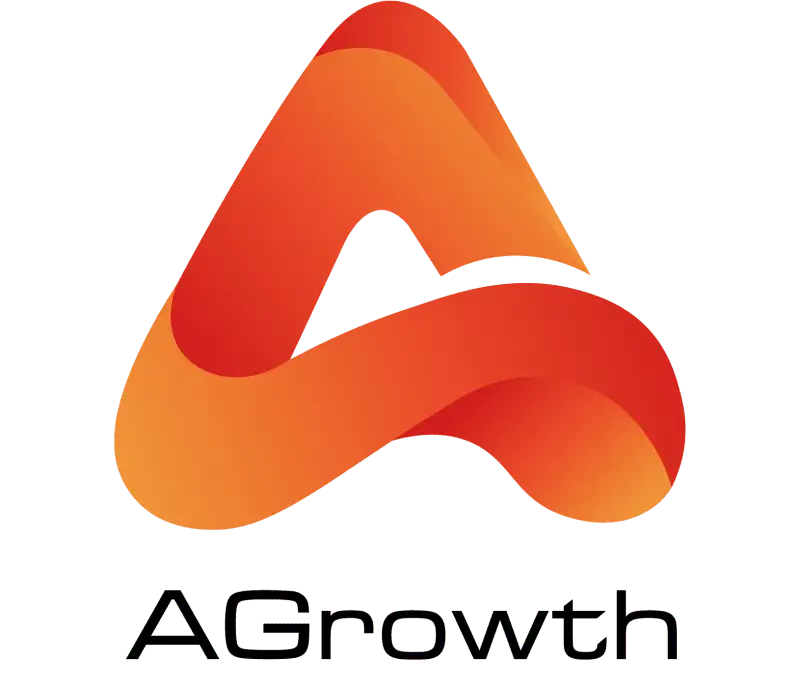
Table of Contents
The Definitive Facebook Ad Naming Convention for Scalable Reporting & Analysis
Every experienced media buyer knows that chaos in Meta Ads Manager begins with poor naming discipline. Without a clear system, your campaigns quickly turn into an unmanageable mess—especially when you’re running dozens of creatives, audiences, and tests across multiple regions. That’s where Facebook ad naming conventions come in. A consistent naming structure helps you identify campaigns at a glance, improve team collaboration, and analyze performance without constantly opening every ad set.
In this guide, you’ll learn exactly how to structure your ad names like a pro, how to scale naming conventions across large accounts, and how to avoid the common mistakes that even advanced marketers still make.
Why Facebook Ad Naming Conventions Matter
A clear naming structure is more than an organizational choice—it’s the backbone of efficient campaign management. When your ads follow consistent patterns, you gain full visibility into what’s running, how it performs, and where to optimize.
Improved Organization and Readability
Naming conventions let you instantly recognize a campaign’s goal, audience, and creative version. This saves hours when navigating large ad accounts or scaling across multiple funnels. Instead of guessing what each ad does, you can identify it at a glance.
Better Data Analysis and Reporting
Consistent names create cleaner data. They allow easy filtering in Meta Ads Manager, and seamless integration with analytics tools like Improvado, Google Sheets, or Looker Studio. As Improvado notes, “standard naming conventions make automated data mapping faster and more reliable,” enabling smarter, data-driven optimization.
Collaboration Across Teams and Agencies
In multi-person teams, a shared naming logic keeps everyone aligned—from strategists to clients. It minimizes miscommunication and prevents errors when duplicating or editing ads. Agencies often treat naming standards as part of their operating system, ensuring every campaign speaks the same structured language.
How to Name Your Facebook Ads for Maximum Efficiency
Before setting your first naming rule, you need a clear hierarchy. Facebook campaigns are structured across three levels—Campaign, Ad Set, and Ad. Each level should have its own logical pattern, so that together they form a complete story.
Campaign Level Naming Format
The campaign level defines the "Why" and "What" of your entire initiative.
Structure: [Date-YYYYMMDD][Client/Product][Funnel-Stage][Objective][BudgetType]
Example: 20251024_AcmeSaaS_TOFU_LEAD_CBO
-
[Date-YYYYMMDD]: ISO date format (20251024) ensures campaigns sort chronologically.
-
[Client/Product]: AcmeSaaS or Shoe-Promo (Essential for agencies or multi-product brands).
-
[Funnel-Stage]: TOFU, MOFU, BOFU (Top/Middle/Bottom of Funnel).
-
[Objective]: CONV (Conversions), LEAD, TRAF (Traffic), AWA (Awareness). Use Meta's own abbreviations. Before launching conversion (CONV) or lead (LEAD) campaigns, it's essential to verify your domain on Facebook to ensure you can configure and track your web events.
-
[BudgetType]: CBO (Campaign Budget Optimization) or ABO (Ad Set Budget Optimization).

Ad Set Level Naming Format
The ad set level defines the "Who," "Where," and "How." This is often the most complex layer.
Structure: [AudienceType][AudienceDetail][Placement]_[OptimizationEvent]
Example: LAL_1-Purch-US_Adv+_Purchase
-
[AudienceType]: INT (Interest-Based), LAL (Lookalike), CUST (Custom Audience/Retargeting).
-
[AudienceDetail]: Be specific. 1-Purch-US (1% Purchase Lookalike, US), 7d-VC (7-day View Content Retargeting), Int-Martech (Interest in Martech).
-
[Placement]: Adv+ (Advantage+ Placements), Man-IGS (Manual, Instagram Stories only), Man-Feed (Manual, Feeds only).
-
[OptimizationEvent]: Purchase, ATC (Add to Cart), LPV (Landing Page View).

Ad Level Naming Format
The ad level defines the creative asset being tested.
Structure: [CreativeConcept][Format][Variable/Hook][CTA][Version]
Example: UGC-Testimonial_VID-9x16_HookA_ShopNow_v1
-
[CreativeConcept]: UGC-Testimonial, Static-Promo, Benefit-Focused.
-
[Format]: VID-9x16 (Video, 9:16 aspect ratio), IMG-1x1 (Image, 1:1), CAR (Carousel).
-
[Variable/Hook]: The specific element you're testing. HookA (Testimonial Hook), Angle-Pain (Pain Point Angle), CopyV2.
-
[CTA]: ShopNow, LearnMore, SignUp.
-
[Version]: v1, v2 (for iteration tracking).
Choosing the right creative format is critical. Ensure your Facebook ad size specifications are correct before you even name the ad.
Common Mistakes When Naming Facebook Ads
Even seasoned media buyers can fall into poor naming habits that make account management messy and reporting harder. A clear and standardized naming convention only works if you consistently apply it. Below are some of the most common mistakes advertisers make — and how to avoid them.
1. Overcomplicating the structure
A frequent issue is trying to include every possible detail in the campaign name — from targeting, placements, and objectives to creative type and date. While this may seem thorough, it often leads to long, unreadable names that slow you down when scanning your dashboard. Instead, focus on the few variables that truly matter for optimization and reporting. Use a consistent order and abbreviation system that keeps names short but informative.
2. Using generic or unclear names
Labels like “Campaign 1,” “VideoTest,” or “RetargetingNew” don’t communicate anything specific. When campaigns multiply, you’ll struggle to understand what each one does. Avoid vague naming by defining clear abbreviations for audience type (e.g., “TOF” for top-of-funnel), objective (“Conv” for conversions), and creative format (“VID” for video). This makes every element immediately recognizable.
3. No consistency across team members
When multiple marketers name campaigns differently, you lose clarity across accounts. One person might write “US_TOF_Conv,” another “TOF-USA-C.” Over time, this inconsistency makes analysis nearly impossible. To prevent this, create an internal naming guide or shared document that outlines your format and abbreviation standards. Train everyone on it, and review naming consistency during weekly or monthly account audits.
4. Not updating names after campaign changes
If you adjust targeting or creative mid-flight but leave the old name, your data becomes misleading. You may think you’re reviewing results from one audience when in reality it’s another. Make it a habit to rename campaigns whenever major changes occur — especially if you duplicate ad sets or swap creative assets.
5. Ignoring data and analytics alignment
Your naming system should work seamlessly with how you track and report campaign data. If your labels don’t match your UTM parameters, dashboards, or BI filters, you’ll waste time trying to reconcile mismatched data. Design your naming structure to align with analytics workflows, ensuring each element — audience, objective, format, date — directly supports your reporting process.
AGROWTH - META AGENCY ACCOUNT
⭐ Managed campaigns with expert guidance
⭐ Flexible invoice-based billings, custom top-ups
⭐ High resistance to suspension via agency tier
⭐ Quick fund transfer to new account if needed
⭐ Priority support via Facebook Partner channel
⭐ Lower fees from 3%
Best Practices for Facebook Ad Naming Conventions
Having a template is step one. Enforcing it across a fast-moving team is step two. Here are the non-negotiable rules that make your naming conventions stick and prevent your data from becoming corrupted.
Consistency is Everything
The marketing data platform Improvado notes, "The single most critical aspect of any naming convention is consistency." If one person uses LAL and another uses Lookalike, your ability to filter is broken. It must be identical, every time.
Create a Central "Taxonomy" Document
Your naming convention shouldn't live in someone's head. It must be a "single source of truth"—a shared Google Sheet, Notion page, or Confluence doc—that defines every abbreviation (LAL = Lookalike, CONV = Conversions) and the exact order of components.
Be Descriptive, Not Excessive
The name should be human-readable. Test1 is useless. But US_M_25-34_Golf_Interest_Mobile_Feed_Video_Ad_v3_Final is unreadable. Your components should be distinct, abbreviated, and purposeful. Stick to the 4-5 most important variables at each level.
Use Standardized Abbreviations
- Keep abbreviations short, intuitive, and unique.
- Conversions -> CONV
- Retargeting -> RET
- Add to Cart -> ATC
- Advantage+ Placements -> Adv+
Use Dates in ISO Format (YYYY-MM-DD)
Always use this format (or YYYYMMDD). Using MM-DD-YYYY (US) or DD-MM-YYYY (EU) will break chronological sorting in your reports.
Don't let mismatched daily reports destroy your analysis! If your data always seems to reset at the wrong time, you need to fix your time zone in Facebook Ads Manager immediately. Here’s the step-by-step guide!
Avoid Spaces and Special Characters
Spaces will break most query languages and URL parameters. Characters like &, ?, or / can also cause issues. Stick to one delimiter (_ or -) and alphanumeric characters.
NEVER Rename Live or Paused Ads
This is a critical, pro-level rule. Renaming a campaign, ad set, or ad after it has collected data can break its connection in reporting tools. Worse, editing a live ad set can reset the Facebook ad learning phase, destroying your optimization. If you need to rename something for clarity, duplicate it and launch the new, correctly-named version.
Advanced Naming Conventions for Scaling Accounts
This is where we separate the pros from the beginners. A scalable system anticipates growth in clients, markets, and testing complexity.
When You Manage Multiple Clients or Regions
Prefixes are your best friend. All your naming components should be prepended with a unique identifier for the client or market. This allows for master-level reporting.
-
Client Prefix: [ClientID]_[CampaignName]
-
Example: ACME_20251024_SaaS_TOFU_LEAD_CBO
-
Example: NIKE_20251024_Shoes_BOFU_CONV_CBO
-
Region Prefix: [GEO]_[CampaignName]
-
Example: EMEA_20251024_SaaS_TOFU_LEAD_CBO
-
Date/Quarter Markers:
-
Example: Q4-25_20251024_... (Useful for filtering by business quarter).
If you're managing multiple clients like a pro, your setup needs to look the part. Verify your business on Meta to prove your legitimacy, build client trust, and unlock advanced features reserved for serious advertisers.
For Creative Testing & Experimentation
Your ad name is your testing variable. Structure it to isolate what you are testing. Let's say you're testing two hooks (Hook1, Hook2) and two CTAs (CTA1, CTA2).
-
UGC-Vid_Hook1_CTA1_v1
-
UGC-Vid_Hook1_CTA2_v1
-
UGC-Vid_Hook2_CTA1_v1
-
UGC-Vid_Hook2_CTA2_v1
Now, you can easily create a report that isolates UGC-Vid and pivots performance by the Hook and CTA variables. The experts at Motion, a creative analytics platform, build their entire product around this concept: "strong naming conventions unlock a world of creative analysis."
Syncing Naming with Data Pipelines
This is the ultimate goal. Your internal ad name must connect to your external analytics.
Tools like Supermetrics and Improvado pull data via the API, and "Ad Name" is a primary dimension. In a BI tool like Looker Studio (formerly Data Studio), you can use functions to parse this dimension.
FAQs (Frequently Asked Questions)
What is a good naming convention for Facebook ads?
A good naming convention is one that is consistent, scalable, and machine-parsable. It should clearly communicate the most important variables of the campaign, ad set, and ad (like audience, objective, and creative) using standardized abbreviations and a consistent delimiter (e.g., _).
How do I create a naming template in Facebook Ads Manager?
When you are creating or duplicating a campaign, ad set, or ad, look for the "Name" field. You will see a small gear icon or a "Create Name Template" button. Clicking this allows you to build a dynamic name using predefined fields (like {{campaign.objective}}) and custom text.
Should I rename Facebook campaigns that are in the learning phase?
No. Never. Renaming a live campaign or ad set is generally safe but not recommended as it can break reporting links. However, making any significant edit to an ad set—which includes changes that might be triggered by a name change—can reset the Facebook ad learning phase. This forces Meta's algorithm to start from scratch, which almost always hurts performance. If you must rename, duplicate the ad set and launch the new one.
Should I include dates in ad names?
Yes. Adding month or quarter markers (e.g., JAN25 or Q1_25) helps track performance trends over time and simplifies reporting comparisons between campaigns.
Can I automate Facebook ad naming?
Yes. Tools like Revealbot, Motion, or Meta’s duplication templates can auto-apply naming formats. Automation ensures consistency and reduces manual setup time.
What are common mistakes in ad naming?
The biggest issues are inconsistency, unclear abbreviations, and overly long names. Stick to short, logical tags and avoid mixing objectives or audiences in one naming line.
Related posts










Your comment